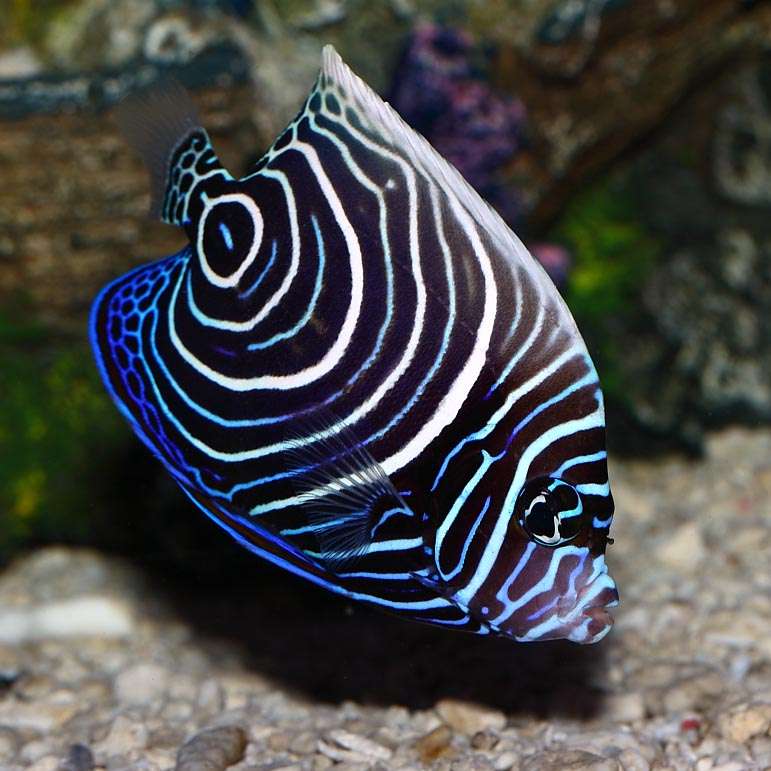
Size
3-6 inches
Physical characteristics and behavior
Juveniles typically have a very dark blue body color with white and light blue stripes that form a pattern like a bulls-eye. At about 3 to 6 inches in length, juveniles start to develop and frequently have an oddly mottled appearance. Depending on the food, stress, and particular specimen in issue, this change can take anywhere from 4 months to a full year to complete.
Care When Keeping as Pet

- Care Level
The saltwater angelfish Pomacanthus imperator requires only modest care. This is explained by the fact that they require specific water conditions, which may be difficult to manage, and that they require a lot of space because they may grow rather large. It is challenging to get them into your aquarium because they travel poorly and are very stressed.
By making the appropriate choice early on, you may reduce any potential risks associated with keeping Pomacanthus imperator angelfish. Are reefs with emperor angelfish safe? The fact that they are connected in the wild prompts many aquarists to ponder this subject. The unexpected response is that they are not.
- Size Of Tank
You must try to mimic their natural surroundings to give them the best chance in captivity. You’re looking at a minimum aquarium capacity of 125 gallons for just one emperor angelfish and over 180 gallons for a pair because they are territorial and used to having a lot of room.
- Substrate
The substrate has plenty of live stones for the fish to consume as well as hiding spots for the fish. The fish will feel more comfortable as a result. They require numerous aquatic habitats as well as covert locations.
- Water and Temperature Conditions
It needs a saltwater aquarium with a minimum volume of 125 gallons, water that is between 72 and 82 degrees Fahrenheit, and that has a pH between 8.2 and 8.4.
- Feeding
Simply make sure they consume a healthy, balanced meal that includes vegetables, meat, and sponge materials. It is quite difficult to replicate their food in the wild in captivity; the best you can do is combine tunicated hydroids with algae. They are cleaner fish, so they can handle the algae issue on their own.
Think on consuming all or the majority of the following in a balanced diet: spinach, hydroid, krill, brine shrimp, squid, mussels, flake food, algae, and mysis
Table





